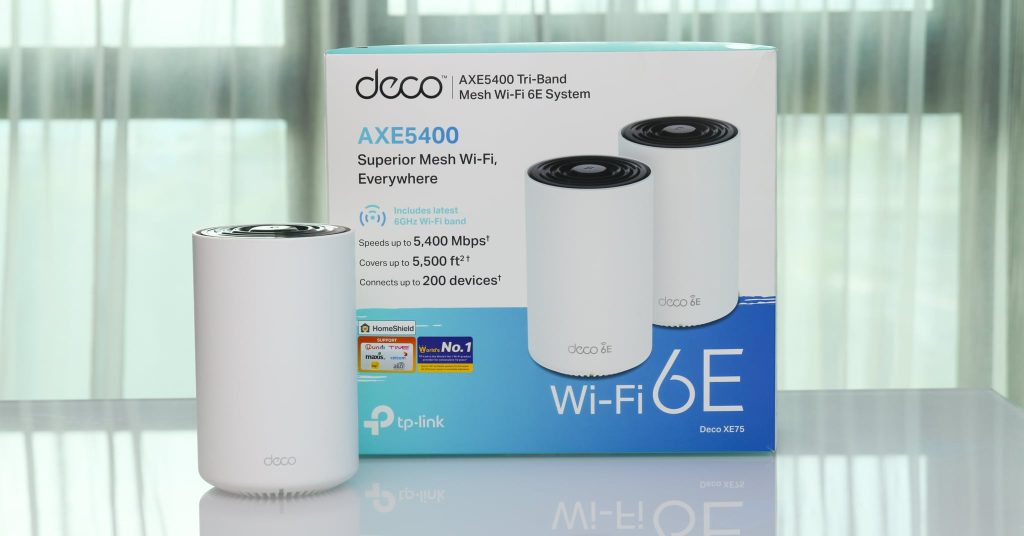
If you are looking for a really fast mesh Wi-Fi system, the new Deco XE75 from TP-Link with Wi-Fi 6E technology is worth a look. It’s finally available in Malaysia at a retail price of RM1499 (~$320 USD) for the twin pack model with 3 years of product warranty.
Wi-Fi 6E introduced the new 6GHz band which is a great addition considering how congested the 5GHz band has gotten over the years. Network quality in the 5GHz band is not as good as before especially at a high density environment such as an apartment building or condominium.
This is where the Wi-Fi 6E with the new 6GHz band is looking to solve. With a wider spectrum and less devices occupying it at the moment, there will be minimal interference or congestion. This means the Wi-Fi network will be faster, more stable and more consistent.
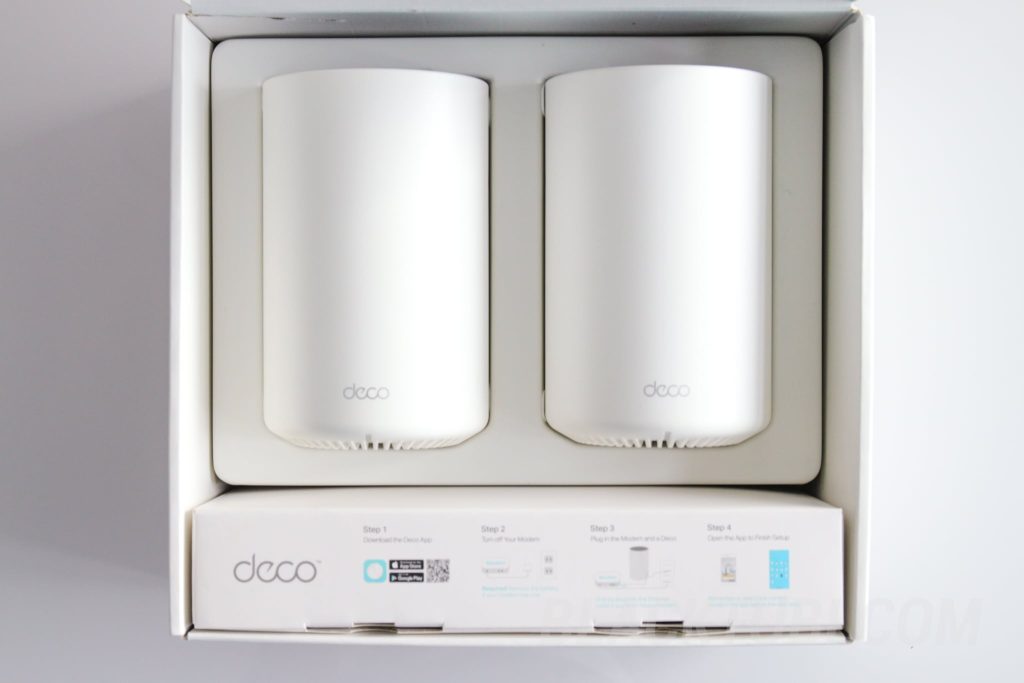
Now, the Deco XE75 is a Tri-Band Mesh Wi-Fi 6E AXE5400 System. This means it actually broadcast a Wi-Fi network in all 3 bands so all your devices even from 10 years ago will be compatible. However, TP-Link designated the 6GHz band as the dedicated backhaul for the mesh WiFi network.
By using the 6GHz band as the wireless backhaul, the whole system would be able to enjoy a super fast network link between the main unit and mesh node. This would enable devices connected to the mesh node to have a much faster Wi-Fi speed compared to other conventional Wi-Fi 6 system in the market.
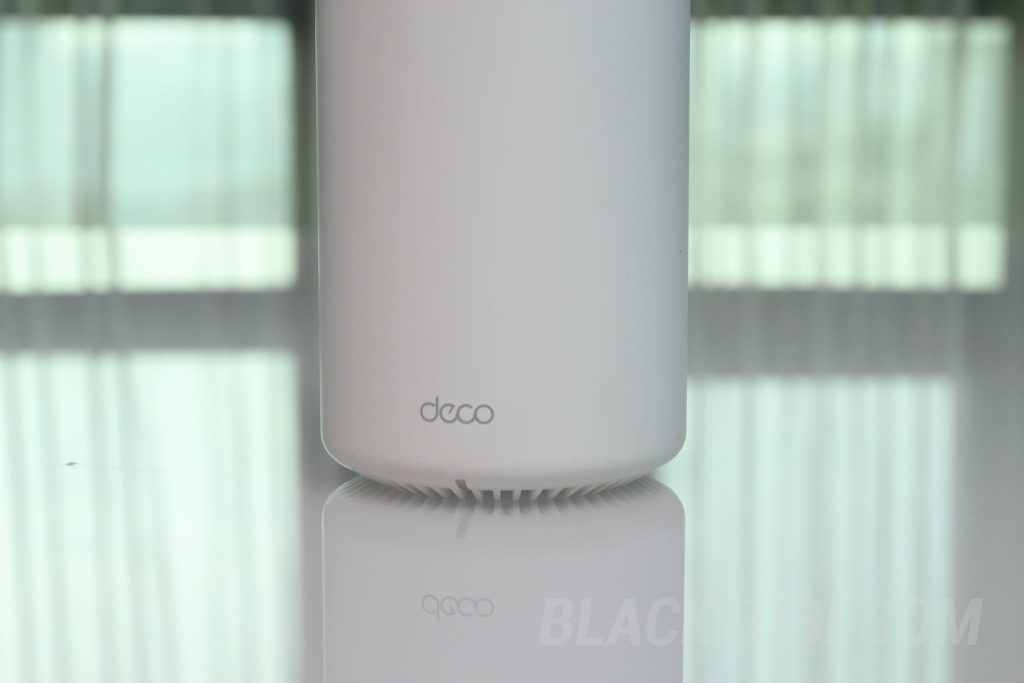
The minimalistic design of the Deco XE75 lets it to blend into most modern interior design easily. It actually reminds me of MUJI a lot. You’ll want to place the Deco XE75 somewhere visible to ensure it has good signal reception.
Hardware and Specs
Like the Archer AXE75, the Deco XE75 is powered by a Broadcom 1.7GHz Quad-Core CPU coupled with 512MB RAM. That’s actually slightly faster than the CPU in the current flagship model, Deco X90 which we reviewed previously. TP-Link claims the system can support up to 200+ connected Wi-Fi devices.
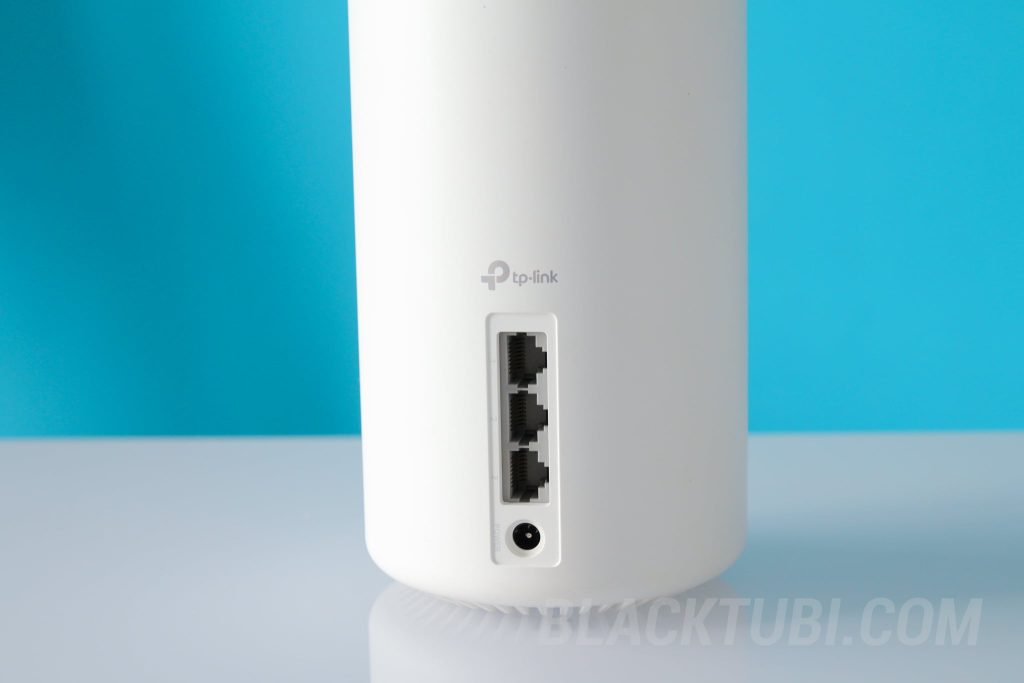
TP-Link also added another Gigabit Ethernet LAN port to this product resulting in a total of 3 Gigabit Ethernet ports on each product. Unfortunately, the Deco XE75 does not come with 2.5G WAN/LAN port, unlike the more expensive Deco X90 model.
Mesh Performance Test
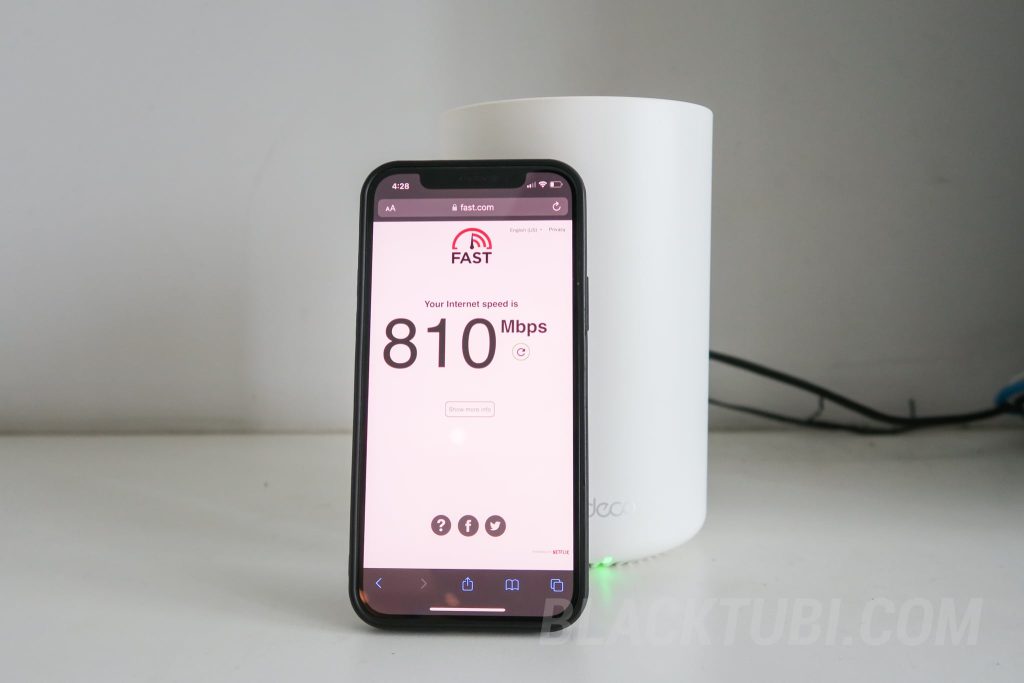
When testing the speed with my iPhone 13 on short distance, the Deco XE75 easily provide speed over 800Mbps with my Gigabit Internet connection. Not a surprise here as all Wi-Fi 6 products should deliver speed over 800Mbps at short distance.
The Deco XE75 is significantly faster than TP-Link’s own flagship Deco X90 when testing it at multiple points in my home. That is a huge surprise as the Deco X90 actually comes with 20% more backhaul capacity. It shows that Wi-Fi 6E can provide more usable speed thanks to a cleaner signal at 6GHz band.
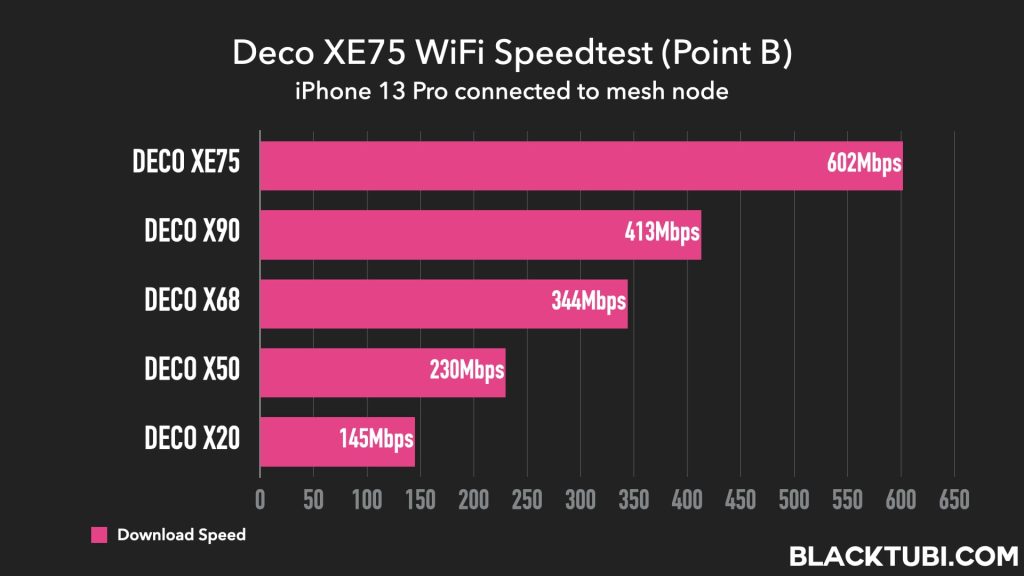
When connected to the mesh node after 2 walls to the main Deco unit, the Deco XE75 outperforms even the Deco X90 significantly. The new 6GHz is just so much more efficient resulting is a much faster speed for the Deco XE75.
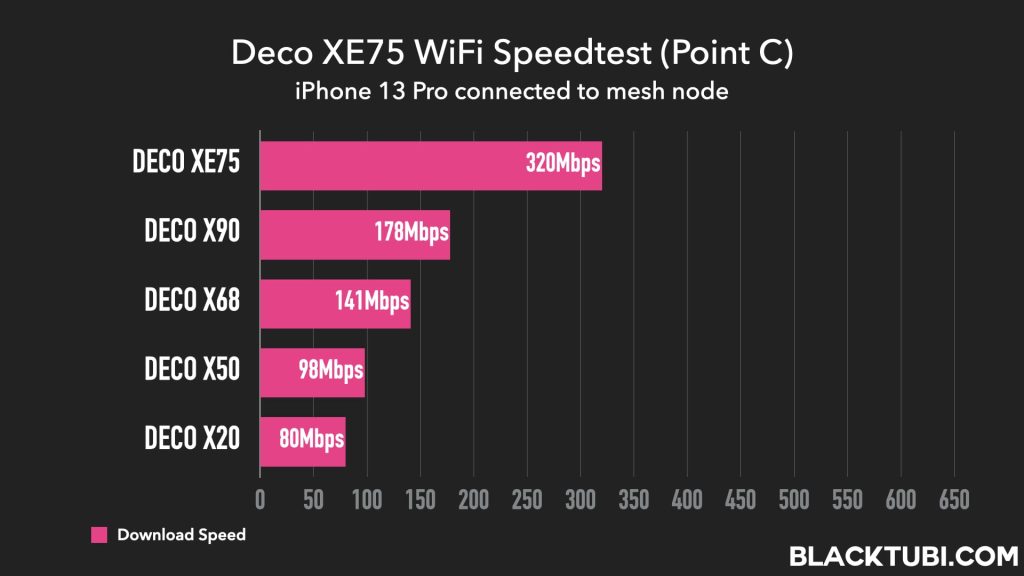
The next location is really testing the limit of the system as it is 2 walls after the mesh node in total of 4 walls to the main unit. The Deco XE75 still showing a significant lead over the Deco X90 which really surprised us. While it is strange, the performance is replicable even after several test.
Seamless Fast Roaming
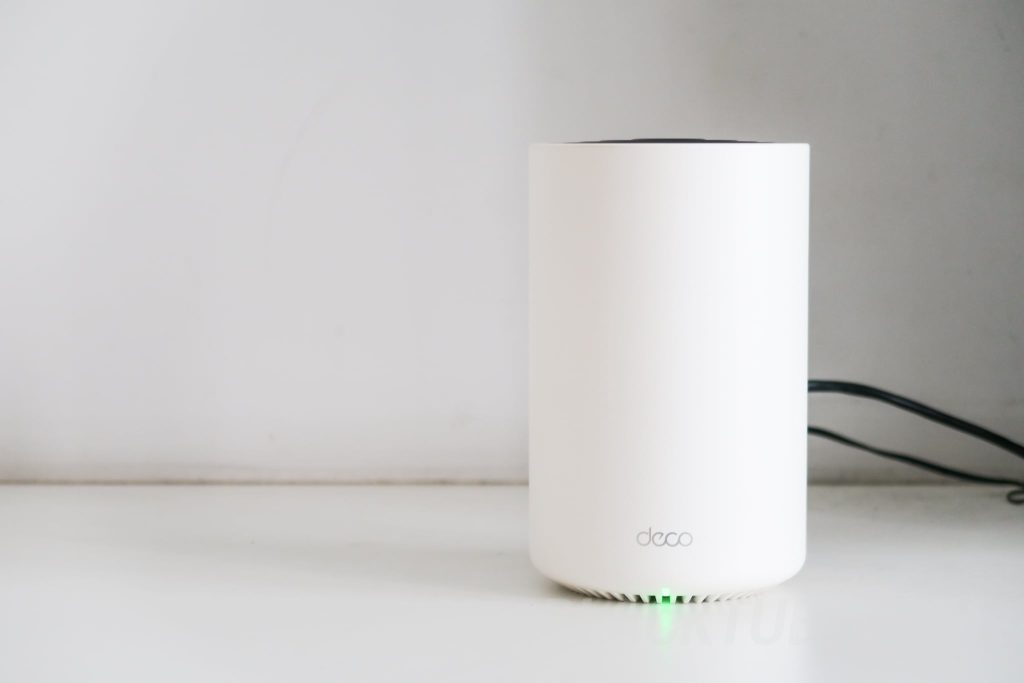
The roaming capability is one of the strongest selling points of TP-Link Deco Mesh WiFi System. Deco XE75 comes with 802.11k/v/r fast roaming technology with AI-Driven roaming algorithm. There will be just one Wi-Fi name on the entire mesh WiFi network so no manual switching is required.
When testing it on my mobile phone, I do not notice any freezes or dropouts even when I am walking around in my home. The Deco mesh technology will automatically switches my device to the best network as I am moving across different area in my property.
Deco App and Features
TP-Link Deco app is well designed and greatly enhanced the user-experience of the Deco Mesh Wi-Fi system. TP-Link also provided really good step-by-step videos on how to setup the system. Also worth mentioning that the Deco XE75 will support all Internet services in Malaysia.
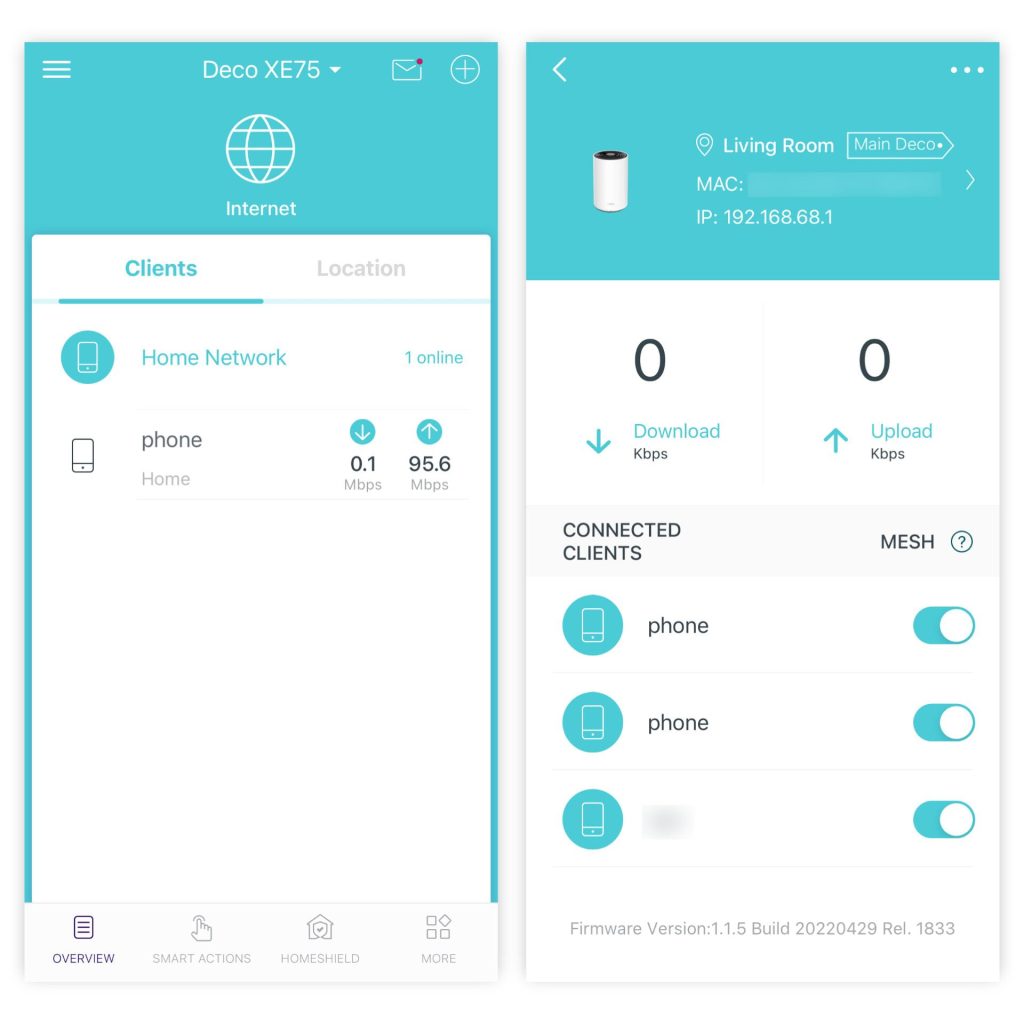
The app is very user-friendly and it will show the usual things like the list of connected devices, network status for each device their current network speed. The system also comes with some advanced features such as DDNS, port forwarding, static IP lease, VLAN IPTV and more.
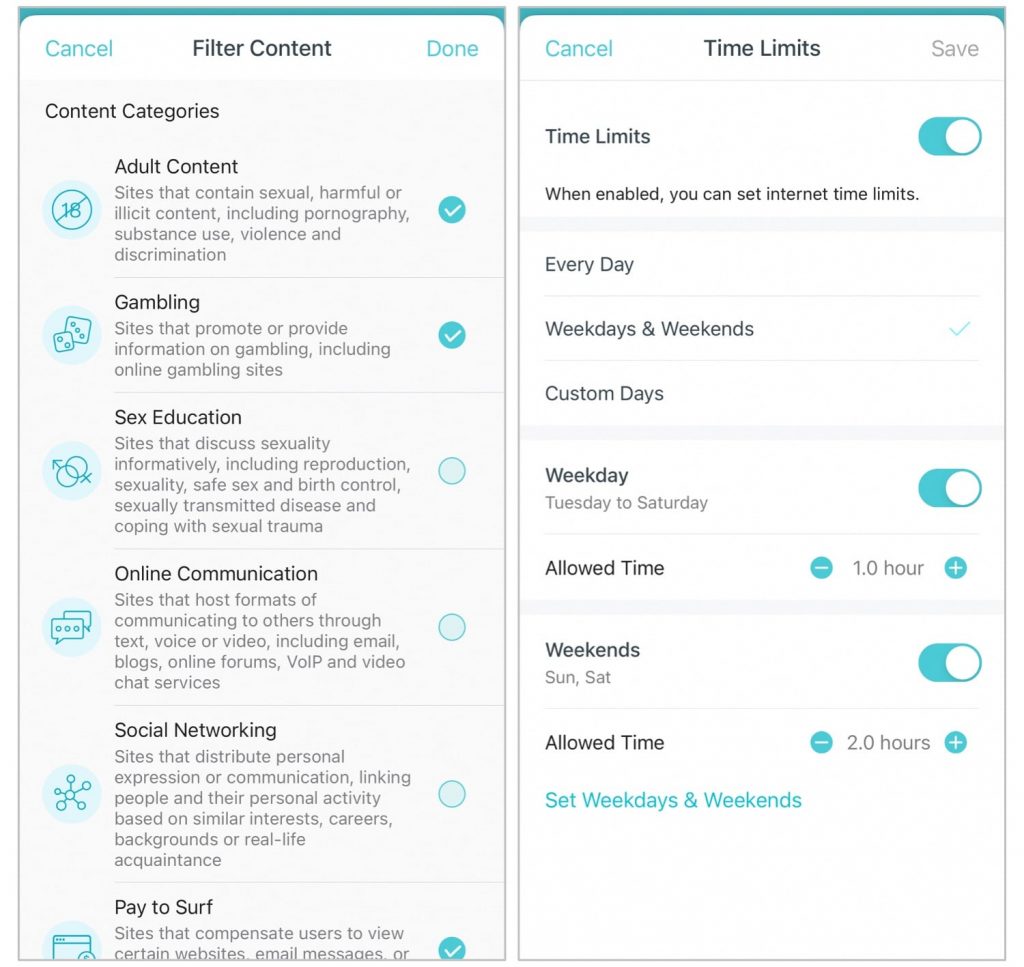
For those looking for more control over their family members, the HomeShield parental control service offers per device content filtering and usage limitation. This feature is very robust and offers a rather comprehensive content filtration policy for your family.
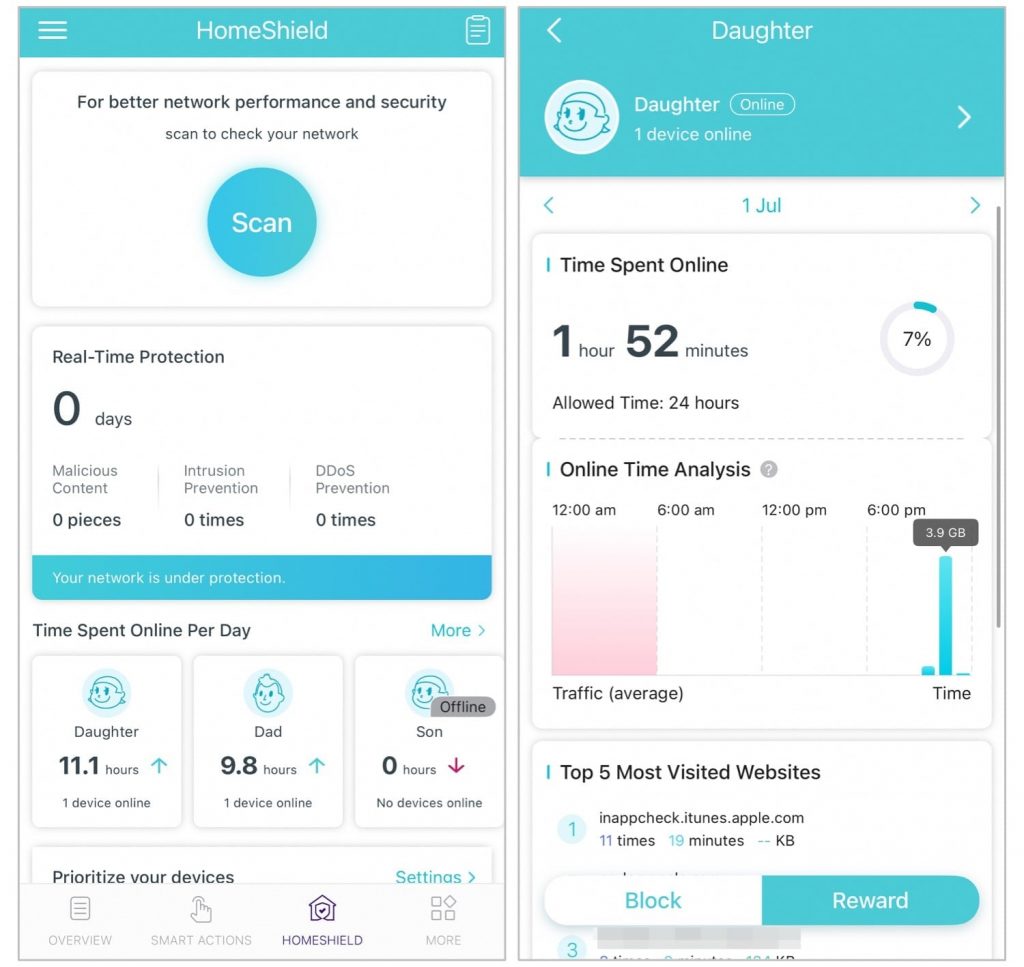
TP-Link is also selling a Pro tier which require a monthly subscription where it adds more features such as detailed reporting and more granular customization. However, I reckon the basic tier is more than enough for most customers as it included the content filtering software for all devices.
TP-Link’s HomeShield software suite built-in to the Deco XE75 also included a firewall feature which can block harmful websites from the network. The Deco XE75 also supported the latest WPA3 Wi-Fi security on all 3 bands of the mesh Wi-Fi network.
Closing Thoughts
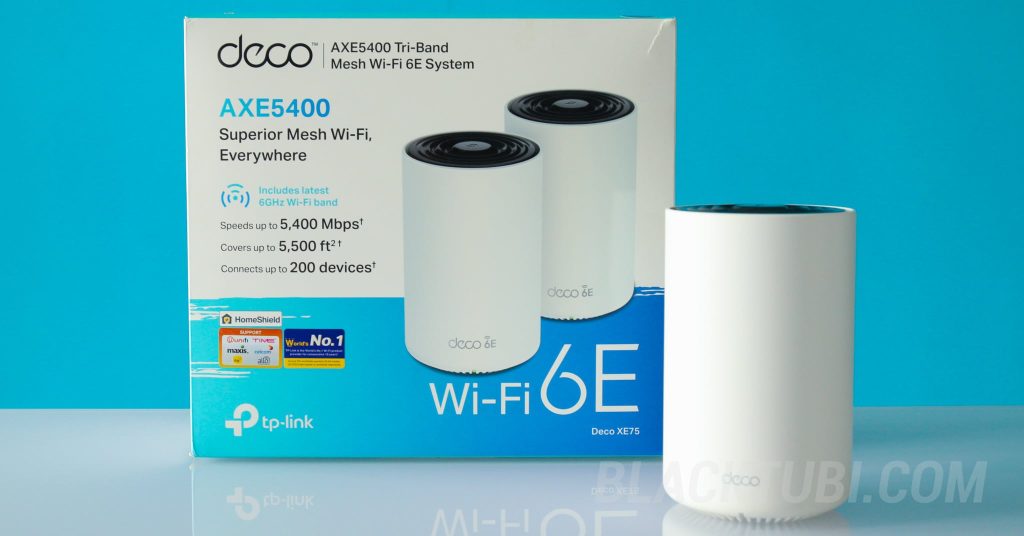
For just RM1499, the Deco XE75 is now TP-Link’s fastest mesh WiFi system with Wi-Fi 6E technology and the new 6GHz band. While being cheaper than competing older WiFi 6 flagship mesh WiFi systems in the market, the Deco XE75 offers a similar if not greater performance than the competitors.
That itself would be a really huge selling point for the Deco XE75. The software is also well optimized to make full potential of the hardware resulting in a seamless experience. TP-Link also listened to the customers and finally adding more ports to the Deco system which is really helpful.
If you are still using a Wi-Fi 5 (Wireless AC) mesh WiFi system, the Deco XE75 is a huge upgrade in performance. The smoothness and speed boost is instantly noticeable on day to day usage. It’s also a future proof product with the 6GHz band ready for future devices that require faster speed.
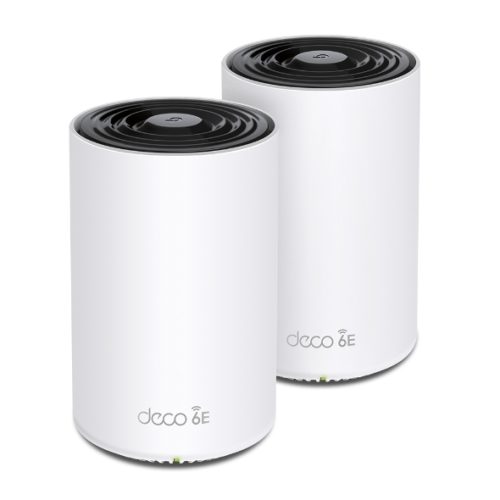
TP-Link Deco XE75
9.2
Tubi Rating
pros
- 3 Gigabit LAN/WAN on each unit
- Very fast system performance with Wi-Fi 6E 6GHz dedicated backhaul
- Minimalistic design
cons
- Monthly subscription required to get more features from HomeShield Pro

Hi Blacktubi, thanks for your all reviews and work! I need 1 router for my office and 2 part mesh system for my home. Option1: Buy 3 parts Deco XE75 and use 1 of them in my office(5 people) and 2 of them in my home. Option2: Buy 2 parts Deco XE75 for my home, and 1 Asus AX86U Pro for my office. Which one is better for my office; TP-Link Deco XE75 or Asus AX86U Pro? Normally, Asus AX86U Pro should be better in terms of performance but TP-Link Deco XE75 has 6Ghz and so I can’t decide between… Read more »
Buying the 3 pack Deco XE75 will be a lot cheaper and the performance shouldn’t be that far off from the RT-AX86U PRO. And since it comes with the 6GHz band, your newer laptops can use it and enjoy a lower latency and less congested connection.
Hey Blacktubi, I really appreciate your amazing and indepth reviews, particularly since they take into account a Malaysian context. I am presently looking at either Deco X60, X68, or XE75. I live in a 1800 sq feet apartment, with 4 bedrooms. We have four housemates who all work from home and need to rely on stable video conferencing regularly, sometimes at the same time! We are currently on the Time 1Gbps plan. But Time’s router and even its nodes don’t seem to work for us. There is wall ethernet connection in living room and master room, though for some reason… Read more »
I believe the Deco XE75 will be a good fit for you. You will probably need at least 3 units since your apartment is larger.
Thank you so much!
Hi Blacktubi,
I am currently on 500mb plan and using 2x deco m9 (wireless backhaul) in a ~3000sqft house.
I may be moving next year to a ~4500 sqft house and wondering if i should add 2x deco m9 or shud i upgrade to a brand new system like XE75 or X68? I read that if using wireless backhaul the X68 5ghz will be more stable and consistent than the XE75 6ghz backhaul.
Please advise. Thank you.
The Deco XE75 is definitely more performant and much faster than the Deco X68. I do not notice any stability or consistency. In fact, the speed is more stable on my test.
Hi Blacktubi,
would setting up the mesh network using ethernet switch improve the speed?
Main unit-switch-node
Using wired backhaul will definitely help provide a faster performance for the node.
I just gotten the XE75 reading your comments.
I’m on a 2 sty normal house and the main node is on ground floor living room and second node on 1st floor living room. I’m on unifi 500mbps and getting fullspeed on main node and 400mbps on subnode.
Should i turn on OFDMA/mu-mimo which is turned off by default? What would be improved/worsen
How do i know the wifi 6E backhaul is working at full/good speed? there is a choice of using 6ghz dedicated backhaul or shared wifi network & backhaul in the deco app?
I believe you manage to achieve a pretty good performance. Deco Mesh Wi-Fi system is already configured on the best state out of the box, I wouldn’t suggest touching them. What you can do is try to improve the placement to further boost the speed.
Thanks, once I did some reading. I turned on both fast roaming and ofdma mumimo which were out of box turned off since they sound like beneficial with only possible compatible issue for older devices in the warning So far no issue yet and will check again For non mission critical like gaming these are like godsent. The speed and latency is much improved compared to mesh of old it seems even on wireless backhaul Tp link has grown leaps and bounds from one of the cheaper maybe slightly buggy offering to having best value and useful app even past… Read more »
The Deco lineup from TP-Link are definitely well developed. It is extremely stable and the mesh roaming is very robust compared to some of the competitors.
Hi black tubi, what is the main difference between x80 and xe75 and which one is better?
Deco XE75 is a tri-band model and it comes with support for Wi-Fi 6E. It should be slightly faster than Deco X80 due to the tri-band dedicated backhaul.
Hi Blacktubi, good day..
Seek your advise on the mesh Wi-Fi..
I have 3 stories landed house and using wired backhaul.
These 2 tplink in my list, do you think which one more suitable for me?
XE75 AX5400 and X80 AX6000
Another question is about XE75, is it able to use 6 ghz as Wi-Fi instead of backhaul?
If able to use it as Wi-Fi, is it able to only show 1 ssid and smart connect your device to 2.4, 5 and 6 ghz?
Thanks in advance.
Yes, you can use the 6GHz network on the Deco XE75 for your device. It’s possible to configure it with the same Wi-Fi name for seamless roaming between all 3 bands as well. However, I not sure if TP-Link changed it.
Which one is better for me?
XE75 or X80?
If you are planning to use it as a mesh Wi-Fi system, the performance of the Deco XE75 will be better.
Can you advise if this XE75 can also work with my existing Deco P9 with PLC? I don’t want my existing P9 go to waste.. main reason I want to upgrade is the p9 can’t get any speed higher than 500Mbps.. having 800Mbps connection
It’s tricky, the PLC backhaul will no longer work for sure but the Deco P9 can still communicate wirelessly with the Deco XE75. I will suggest just replacing them entirely with the Deco XE75 unless you need more coverage for the edge cases.
Hi Blacktubi, I came across your site while searching on mesh wifi and stuff. I am on Time Fiber 500mbps now running with two deco M5s but I didn’t study when making that purchase, currently my apartment is two plus one bedrooms at 1000sqft, I’m experiencing disconnections and weak signals when I’m in different rooms and distances away from the mesh nodes, lagging while watching livestream or video buffering (YouTube is fast, others are not). I have a few questions: Is upgrading to XE75 solving my problem and let me enjoy my internet at near full speed? Is it necessary?… Read more »
The Deco M9 Plus will definitely not able to support 500Mbps on the mesh node reliably. In fact, the Deco M9 Plus is just a faster Deco M5. You will need to use the Deco XE75 if you wish to see a significant improvement. I suggest retiring the Deco M5 once you upgraded to the Deco XE75. Anothing thing with high rise property is to make sure the distance between main unit and mesh node is not more than 2 walls to ensure a good performance.
Hi Blacktubi,
My home setup is that 2 storey house with the Unifi modem situated on the upper floor.
Currently running the TpLink M9Plus and wondering whether it’s worth the upgrade.
My question is, what are your thoughts around the XE75 against the Asus XT8?
More specifically, I’m wondering about the backhaul performance as Asus has 4×4 backhaul albeit on the 5GHz band and the XE75 on the 6GHz band..
Which would make a better backhaul for the main router being on upper floor and node on bottom floor.
Thanks!
ASUS and newer TP-Link Deco mesh Wi-Fi have different philosophy. The ASUS ZenWiFi XT8 is faster on speedtest, great if you are always downloading. But, the Deco XE75 is better at congestion management and things feel smoother due to the great roaming.
Hi Blacktubi, it seems Samsung did not open the 6ghz function for all of Malaysia devices. Are you are of this? Gotten my Samsung s23 ultra and XE75. Not able to connect or find the 6ghz wifi
They didn’t enable the 6GHz band on the Galaxy S22 previously. That’s rather strange that they still restrict 6GHz on the S23 considering that the Malaysian regulators already approved 6GHz band and some laptops that I’ve tested is already able to use it.
I got an update from Samsung that they will have a software patch soon to upgrade to enable 6ghz soon. Hope its soon
Hi !
Deco XE75 : Question as to whether or not Wi-Fi 6E is worth it yet at home. With lots and lots of bandwidth and no interference from previous-gen devices, the 6GHz band makes perfect sense as a sort of VIP section for overcrowded networks in dense environments like airports and stadiums — but the benefits are much less clear in a residential setting, where the majority of devices won’t be able to connect over 6GHz, and where average internet speeds aren’t fast enough for Wi-Fi 6E to flex its muscles .
What”s your opinion on this ?
If you are planning to configure them as fully wireless mesh backhaul, then it’s worth it. In fact, I find the Deco XE75 performs better than a WiFi 6 AX6600 mesh WiFi systems when my Wi-Fi 6 device is connected to the mesh node. I believes having the wireless backhaul on the 6GHz network provides much better performance than having wireless backhaul on the 5GHz network. Also, the 6GHz network guarantees
is the XE75 Pro worth it over the XE75? But it only has a single 2.5gbe port…. intended usage is access point mode.
Unless you planning to invest on a 2.5GbE switch, the Deco XE75 is sufficient. Using a 2.5GbE product on a Gigabit switch doesn’t give you any additional benefit.